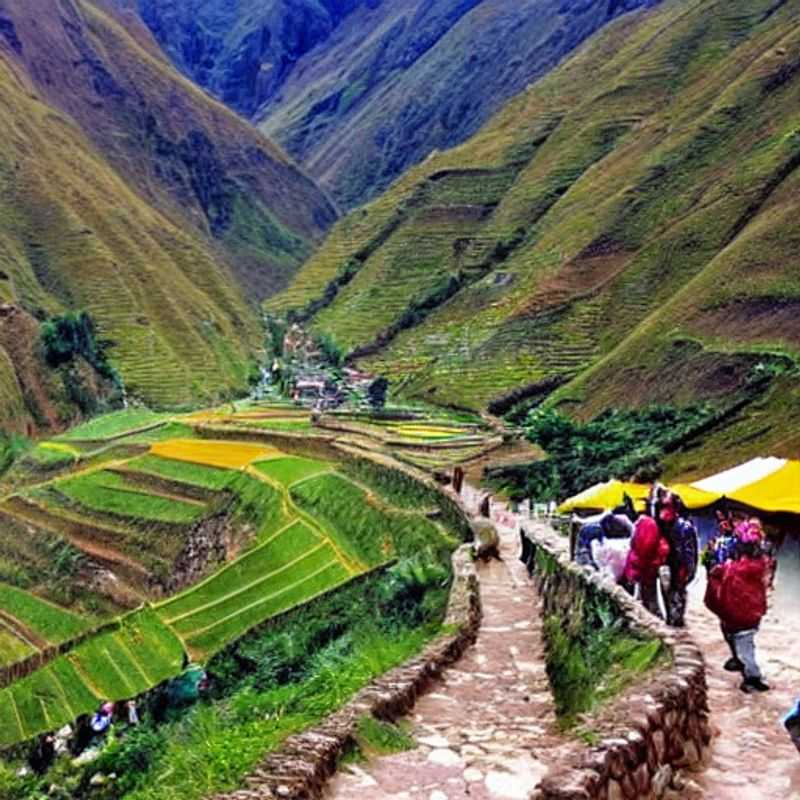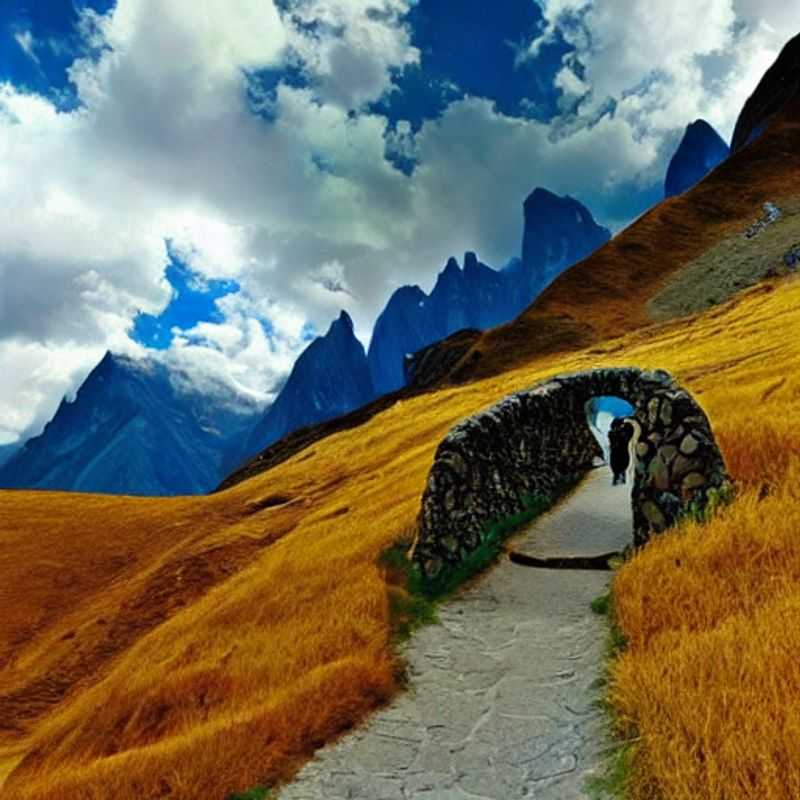Is the Santa Cruz Trek, Peru, a Good Summer Camping Holiday? Top 4 Spots to Explore

Santa Cruz Trek Peru 2026: Essential Safety Tips for Backpackers
Embarking on the Santa Cruz Trek in Peru in 2026 promises an unforgettable adventure, but proper preparation is key to a safe and enjoyable experience. This iconic trek winds through the breathtaking Cordillera Blanca, offering stunning alpine scenery and challenging terrain. To ensure your safety, prioritizing certain aspects of your preparation and journey is crucial. Understanding altitude sickness and its prevention is paramount, as the trek reaches significant elevations. Acclimatization days, staying hydrated with plenty of water, and avoiding alcohol and strenuous activity upon arrival are vital steps. It's also highly recommended to carry diamox or other altitude sickness medication after consulting with your doctor.
When it comes to packing, being prepared for varying weather conditions is essential. The Andes can experience rapid changes, so layering your clothing is a smart strategy. Pack waterproof and windproof outer layers, warm fleece or down insulation, and quick-drying base layers. Don't forget sturdy, broken-in hiking boots, as you'll be covering considerable distances on uneven ground. Essential items also include a reliable backpack, a sleeping bag rated for cold temperatures, a first-aid kit with personal medications, and a water purification system or tablets. A headlamp with extra batteries is indispensable for early morning starts or unexpected delays.
Navigating the Santa Cruz Trek requires a good sense of direction and awareness of your surroundings. While the trail is generally well-trodden, always carry a map and compass or GPS device and know how to use them. Inform someone of your itinerary and expected return date. Traveling with a reputable guide or trekking company can significantly enhance your safety, as they are experienced with the terrain, weather patterns, and emergency procedures. They can also assist with logistics and provide valuable local knowledge. Remember to respect the local culture and environment; pack out all your trash and be mindful of your impact on this pristine wilderness.
Finally, physical fitness plays a significant role in your ability to safely complete the trek. Engage in regular cardiovascular exercise and strength training in the months leading up to your trip. Practice hiking with a weighted backpack to prepare your body for the demands of the trail. Listen to your body throughout the trek; don't push yourself beyond your limits. If you experience severe headaches, nausea, or dizziness, it's important to descend to a lower altitude. By taking these precautions and staying informed, you can maximize your chances of a safe and profoundly rewarding Santa Cruz Trek in 2026.

You may also like
Santa Cruz Trek in Summer: Sun's Out, Inca Myths Out! (Peruvian Adventure Awaits)
Decoding the Inca Trail: Is Santa Cruz Trek Peru's Perfect Summer Escape?
Sun, Sand, and Sacred Sites: A Tech-Nomad's Guide to the Santa Cruz Trek
Beat the Winter Blues: Santa Cruz Trek – A Peruvian Summer Solstice Adventure
Ancient Mysteries & Modern Tech: My Summer Trek to Santa Cruz, Peru
Summer Heat, Inca Secrets: Unraveling the Santa Cruz Trek's Hidden History
Is Santa Cruz Trek the Ultimate Summer Getaway? (A Data-Driven Adventure)
Alright, fellow Cultural Explorers! Ready to ditch the digital detox and dive headfirst into the vibrant tapestry of the Santa Cruz Trek in Peru? Summer and fall offer perfect weather for this adventure – think sunny days and cool nights, ideal for hiking. Get ready for a journey blending breathtaking landscapes with rich Inca history.
Let's talk logistics. Expect to spend around $100-$150 USD per day, which covers accommodation (ranging from basic hostels to comfortable lodges), food (delicious Peruvian cuisine!), and entrance fees to various sites. Transportation costs, depending on your chosen route and preferences (bus, colectivo, etc.), will add to this. This estimation doesn't include the cost of flights to and from Peru.
Food is a HUGE part of the experience. Try the local specialties! Think hearty stews, flavorful grilled meats, and of course, the ubiquitous potatoes – Peru has thousands of varieties! Street food is a great way to experience authentic flavors at a budget-friendly price (around $5-$10 USD per meal). Don't forget to try the chicha morada, a refreshing purple corn drink.
The Santa Cruz Trek is renowned for its stunning scenery. You’ll traverse mountain passes, lush cloud forests, and even spot the occasional alpaca grazing peacefully. The local people, primarily Quechua-speaking, are incredibly welcoming and hospitable. You might even learn a few basic phrases to enhance your interactions.
Expect to hear the sounds of nature – birdsong, the rush of rivers, the distant bleating of sheep and alpacas. While music is less prevalent on the trek itself, once you reach towns, you might encounter Andean folk music played on traditional instruments. Architecture is a fascinating blend of traditional Inca stonework and more modern structures. The vibrant colors of the textiles and clothing worn by locals add to the charm. Be sure to respect local customs and traditions.
The overall mood is one of adventure and camaraderie, with fellow trekkers sharing stories and experiences. While solo backpacking is perfectly feasible, you’ll likely find yourself bonding with fellow travellers. Remember to pack layers, sunscreen, and a good pair of hiking boots. And most importantly – embrace the unexpected! This is a journey of discovery, and that’s half the fun.
Total estimated cost for a 5-day trek: $500-$750 USD (excluding flights). Remember this is an estimate, and your actual costs may vary depending on your choices and spending habits. So pack your bags, download your offline maps, and prepare for an unforgettable adventure!

You may also like
Santa Cruz Trek, Peru 2026: Essential Pre-Trek Knowledge
Planning a backpacking adventure on the Santa Cruz Trek in Peru for 2026 requires careful preparation. Understanding the altitude is paramount, as the trek reaches significant heights, and acclimatization is crucial to avoid altitude sickness. Be prepared for varying weather conditions; even in the dry season, expect cold nights and potential rain or snow at higher elevations. Packing layers is essential.
Physical fitness is non-negotiable. The trek involves strenuous uphill and downhill sections, and a good level of cardiovascular endurance will greatly enhance your experience. Bookings for permits and guides are often required in advance, especially for popular trekking seasons, so research and secure these early. Consider the best time to visit, which generally falls during the dry season from May to September, offering clearer skies and more stable weather.
Essential gear includes sturdy hiking boots, a good quality backpack, warm sleeping bag, and waterproof clothing. Don't underestimate the need for sun protection, as the sun's rays are intense at altitude. Carry sufficient cash, as ATMs are scarce in the region. Familiarize yourself with basic Spanish phrases, which can be very helpful. Finally, respect the local culture and environment; pack out all your trash and be mindful of the delicate ecosystem.